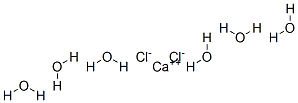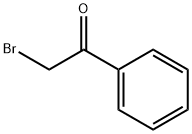Hafnium oxide
Synonym(s):Hafnia
- CAS NO.:12055-23-1
- Empirical Formula: HfO2
- Molecular Weight: 210.49
- MDL number: MFCD00003565
- EINECS: 235-013-2
- SAFETY DATA SHEET (SDS)
- Update Date: 2024-08-28 13:53:24

What is Hafnium oxide?
Description
Hafnium is a shiny, silvery, ductile metal and resistant to corrosion. The physical properties of hafnium metal samples are markedly affected by zirconium impurities, especially the nuclear properties, as these two elements are among the most difficult to separate because of their chemical similarity. Hafnia is used in optical coatings and as a high-k dielectric in dynamic randomaccess memory (DRAM) capacitors. Hafnium (IV) oxide is a colourless, inert solid and has been reported as one of the most common and stable compounds of hafnium. It is an electrical insulator. Hafnium dioxide is an intermediate in some processes that give hafnium metal. It reacts with strong acids and strong bases. It dissolves slowly in hydrofluoric acid. At high temperatures, it reacts with chlorine in the presence of graphite or carbon tetrachloride and forms the hafnium tetrachloride. Hafnium-based oxides are currently important materials to replace silicon oxide as a gate insulator because of its high dielectric constant. Hafnium (Hf) is found in association with zirconium ores, production based on zircon (ZrSiO4) concentrates which contain 0.5%–2% hafnium. Hafnium has extensive applications in industries especially because of its resistance to corrosion. Different compounds of hafnium used in ceramics industry are hafnium boride, hafnium carbide, hafnium nitride, hafnium oxide, hafnium silicate, and hafnium titanate. Hafnium-based oxides are currently leading candidates to replace silicon oxide as a gate insulator in fieldeffect transistors.
Chemical properties
Hafnium oxide is a white cubic crystal, insoluble in water, hydrochloric acid, nitric acid and other common inorganic acids, and slowly dissolves in hydrofluoric acid to form fluorohafnate. It reacts with hot concentrated sulfuric acid or bisulfate to produce hafnium sulfate. Mix and heat with carbon in the presence of chlorine to obtain hafnium tetrachloride. It reacts with potassium fluorosilicate to produce potassium fluorohafnate.
Physical properties
Hafnium oxide (HfO2) is a white crystalline powder. Pure hafnium oxide exists in three forms, one in the amorphous state and the other two in the crystalline state. When unstable compounds such as hafnium hydroxide and hafnium oxychloride are calcined at <400°C, amorphous hafnium oxide can be obtained. Continue to heat the hafnium oxide to 450-480°C, and start to transform into monoclinic crystals, and continue to heat to 1000-1650°C to gradually increase the lattice constant, and transform into a monomer of 4 hafnium oxide molecules. At 1700~1865℃, it starts to transform into tetragonal crystal system. Hafnium is a refractory metal which occurs in nature in zirconium minerals.
The Uses of Hafnium oxide
Hafnium(IV) oxide is used as Intermediates, Paint additives and coating additives, metal Products. And it is also used in optical coatings, as a refractory material in the insulation of such devices as thermocouples.
Flammability and Explosibility
Non flammable
Potential Exposure
Hafnium metal has been used as a control rod material in nuclear reactors. Thus, those engaged in fabrication and machining of such rods may be exposed.
Shipping
UN1326 Hafnium powder, wetted with not <,25% water (a visible excess of water must be present) (1) mechanically produced, particle size<53 μm; (2) chemically produced, particle size<840 μm, Hazard Class: 4.1; Labels: 4.1-Flammable solid. UN2545 Hafnium pow der, dry, Hazard Class: 4.1; Labels: 4.1-Flammable solid. UN1346 Hafnium powder, wetted with not less than 25% water (a visible excess of water must be present) (1) mechanically produced, particle size less than 53 μm; (2) chemically produced, particle size less than 840 μm, Hazard Class: 4.1; Labels: 4.1-Flammable solid.
Incompatibilities
Fine powder or dust may form explosive mixture in air. The powder is highly flammable and a strong reducing agent. The powder or dust reacts with moisture forming flammable hydrogen gas; may spontaneously ignite on contact with moist air; and at higher temperatures, with nitrogen, phosphorous, oxygen, halogens, and sulfur; contact with hot nitric acid; heat, shock, friction, strong oxidizers; or ignition sources may cause explosions.
Waste Disposal
Recovery. Consider recycling, otherwise, this chemical must be disposed of in compliance with existing federal and local regulations.
Properties of Hafnium oxide
| Melting point: | 2810 °C |
| Density | 9.68 g/mL at 25 °C(lit.) |
| refractive index | 2.13 (1700 nm) |
| solubility | insoluble in H2O |
| form | powder |
| color | Off-white |
| Specific Gravity | 9.68 |
| Water Solubility | Insoluble in water. |
| Crystal Structure | Monoclinic |
| Merck | 14,4588 |
| Exposure limits | ACGIH: TWA 0.5 mg/m3 NIOSH: IDLH 50 mg/m3; TWA 0.5 mg/m3 |
| CAS DataBase Reference | 12055-23-1(CAS DataBase Reference) |
| EPA Substance Registry System | Hafnium oxide (HfO2) (12055-23-1) |
Safety information for Hafnium oxide
| Signal word | Warning |
| Pictogram(s) |
 Exclamation Mark Irritant GHS07 |
| GHS Hazard Statements |
H315:Skin corrosion/irritation H319:Serious eye damage/eye irritation |
| Precautionary Statement Codes |
P280:Wear protective gloves/protective clothing/eye protection/face protection. P302+P352:IF ON SKIN: wash with plenty of soap and water. P305+P351+P338:IF IN EYES: Rinse cautiously with water for several minutes. Remove contact lenses, if present and easy to do. Continuerinsing. P332+P313:IF SKIN irritation occurs: Get medical advice/attention. P337+P313:IF eye irritation persists: Get medical advice/attention. |
Computed Descriptors for Hafnium oxide
| InChIKey | CJNBYAVZURUTKZ-UHFFFAOYSA-N |
New Products
4-Aminotetrahydropyran-4-carbonitrile Hydrochloride (R)-3-Aminobutanenitrile Hydrochloride 4-AMINO-TETRAHYDRO-PYRAN-4-CARBOXYLIC ACID HCL 4-(Dimethylamino)tetrahydro-2H-pyran-4-carbonitrile 3-((Dimethylamino)methyl)-5-methylhexan-2-one oxalate 1,4-Dioxa-8-azaspiro[4.5]decane 5-Bromo-2-nitropyridine Nimesulide BP Aceclofenac IP/BP/EP Diclofenac Sodium IP/BP/EP/USP Mefenamic Acid IP/BP/EP/USP Ornidazole IP Diclofenac Potassium SODIUM AAS SOLUTION ZINC AAS SOLUTION BUFFER SOLUTION PH 10.0(BORATE) GOOCH CRUCIBLE SINTERED AQUANIL 5 BERYLLIUM AAS SOLUTION 2-Bromo-1-(bromomethyl)-3-chloro-5-nitrobenzene 2-Bromo-3-nitroaniline N-(3-Hydroxypropyl)-N-methylacetamide 3-Bromo-6-chloropyridazine 4-ethyl-3-nitrobenzoic acidRelated products of tetrahydrofuran








You may like
-
 Hafnium(IV) oxide CAS 12055-23-1View Details
Hafnium(IV) oxide CAS 12055-23-1View Details
12055-23-1 -
 Hafnium(IV) oxide CAS 12055-23-1View Details
Hafnium(IV) oxide CAS 12055-23-1View Details
12055-23-1 -
 Hafnium oxide CAS 12055-23-1View Details
Hafnium oxide CAS 12055-23-1View Details
12055-23-1 -
 Hafnium oxide CAS 12055-23-1View Details
Hafnium oxide CAS 12055-23-1View Details
12055-23-1 -
 Hafnium oxide CAS 12055-23-1View Details
Hafnium oxide CAS 12055-23-1View Details
12055-23-1 -
 Hafnium oxide pieces, 1-3 mm, 99.99% CAS 12055-23-1View Details
Hafnium oxide pieces, 1-3 mm, 99.99% CAS 12055-23-1View Details
12055-23-1 -
 Hafnium oxide, 99.995% CAS 12055-23-1View Details
Hafnium oxide, 99.995% CAS 12055-23-1View Details
12055-23-1 -
 Hafnium oxide nanopowder, APS 100-200 nm CAS 12055-23-1View Details
Hafnium oxide nanopowder, APS 100-200 nm CAS 12055-23-1View Details
12055-23-1